Backhoes
and loaders are useful tools on farms and ranches. Accidents
involving backhoes and loaders occur and are often tragic.
While accidents may be similar to those that happen to tractors
the additional of an attached backhoe and/or loader increases
the likelihood of an accident due to increased height and
length of the machine. Common accidents with these machines
are overturns, falls, runovers and contact with other people
and other objects. Because of the size of these machines and
added features, increased diligence is needed to prevent accidents.
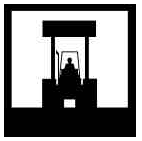
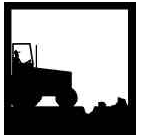

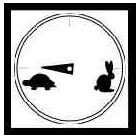
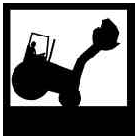
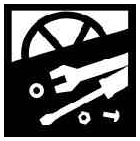
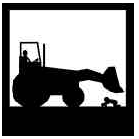
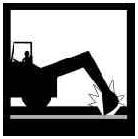 Be aware of the environment around you at all times. This
includes low hanging power lines, tree limbs, bridges, or
other obstacles. Know where gas, power, and phone lines
are buried before you start to dig.
Be aware of the environment around you at all times. This
includes low hanging power lines, tree limbs, bridges, or
other obstacles. Know where gas, power, and phone lines
are buried before you start to dig.
A
Pacific Northwest Extension Publication
Idaho . Oregon . Washington
Written by Tom Karsky, University of Idaho, and A. K. Jaussi,
former graduate assistant, Washington State University. For
more information about farm safety, please contact:
Tom Karsky, Extension Farm Safety Specialist, Department of
Biological and Agricultural Engineering, University of Idaho,
Moscow, ID 83844-0904, phone 208/885-7627, fax 208/885-7908,
email (tkarsky@uidaho.edu).
Myron Shenk, Integrated Plant Protection Center, Oregon State
University, 2040 Cordley Hall, Corvallis, OR 97331-2915, phone
541/737-6274, fax 541/737-3080, email (shenkm@bcc.orst.edu).
Bill Symons, Extension Safety Specialist, Biological Systems
Engineering Department, Washington State University, 204 L.
J. Smith Hall, Pullman, WA 99164-6120, phone 509/335-2902, fax
509/335-2722, email (symons@mail.wsu.edu).
This series is supported, in part, by funds provided by the
Pacific Northwest Agricultural Safety and Health Center (PNASH),
Department of Environmental Health, Box 357234, University of
Washington, Seattle, Washington 98195-7234 (phone: 800/330-0827,
email: pnash@u.washington.edu).
PNASH is funded by CDC/NIOSH Award #U07/CCU012926-02. Published
and distributed in furtherance of the Acts of Congress of May
8 and June 30, 1914, by the University of Idaho Cooperative
Extension System, the Oregon State University Extension Service,
Washington State University Cooperative Extension, and the U.S.
Department of Agriculture cooperating. The three participating
Extension services provide equal opportunity in education and
employment on the basis of race, color, religion, national origin,
gender, age, disability, or status as a Vietnam-era veteran
as required by state and federal laws.
The University of Idaho Cooperative Extension System, Oregon
State University Extension Service, and Washington State University
Cooperative Extension are Equal Opportunity Employers. Published
December 1998 Backhoe and Loader Safety Farm Safety Series PNW
512
Disclaimer and Reproduction Information: Information in NASD does not represent NIOSH policy. Information included in NASD appears by permission of the author and/or copyright holder. More